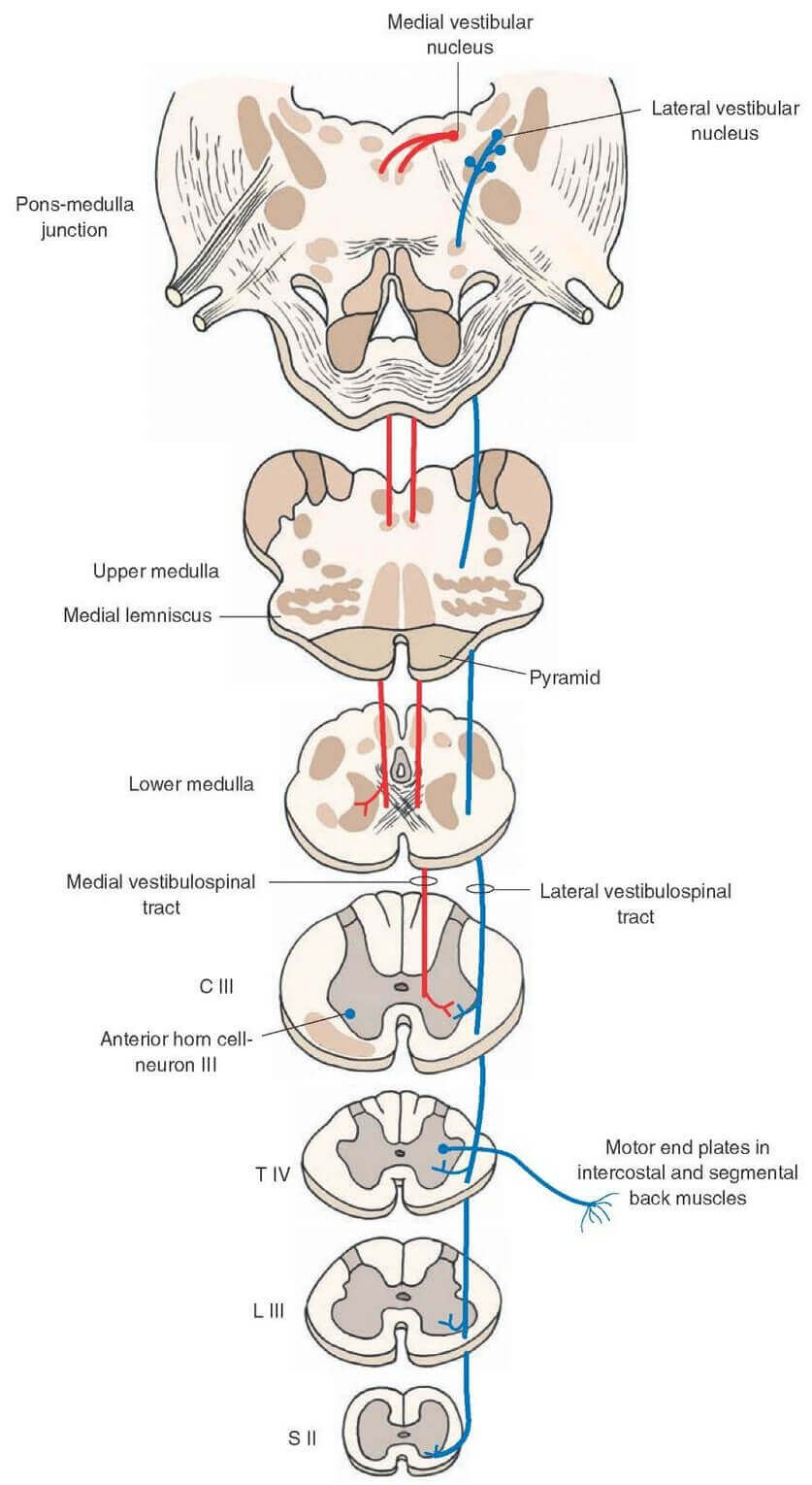
Vestibulospinal Tract
- Coffee
- Tea
- Milk
- They are two in number known as lateral and medial vestibulospinal tracts.
- Though called lateral and medial, both are present in anterior white column of spinal cord, but lateromedially positioned.
- These tracts arise from vestibular nuclear complex situated at the lateral angle of floor of fourth ventricle at pontomedullary junction.
- Origin:
Lateral vestibulospinal tract– from lateral vestibular nucleus.
Medial vestibulospinal tract– from
- Medial and inferior vestibular nuclei
- Some fibers – From lateral nucleus.
- Nature:
Lateral – uncrossed (ipsilateral)
Medial– crossed (contralateral) as well as uncrossed (ipsilateral).
Fibers of medial vestibulospinal tract extend upto midthoracic level. - Localization: Both the tracts are located in ventral marginal part of anterior white column.
- Termination: Both vestibulospinal tracts terminate in alpha as well as gamma motor neurons of spinal cord via interneurons of laminae VII and VIII.
- Function: Lateral vestibulospinal tract is excitatory to the spinal motor neurons which supply extensor muscles of neck, back and limbs. It is inhibitory to neurons which supply flexor muscles of limbs. Medial vestibulospinal tract inhibit spinal motor neurons which supply muscles of neck and upper part of back.
Reticulospinal Tract
Reticulospinal tracts are two— Medial and lateral. These tracts project from reticular nuclei of brainstem (upper motor neurons) to alpha and gamma motor neurons (lower motor neurons) of spinal cord either directly or through interneurons of laminae VII and VIII. Upper motor neurons for these tract are called reticular nuclei because the cells are intermingled with network (reticulum) of fibers.
- Localization:
Medial: Located in anterior white column, medial to base of anterior horn.
Lateral: Located in lateral white column, lateral to base of anterior horn, close to lateral corticospinal tract and rubrospinal tract. - Termination: Both the tracts terminate in alpha as well as gamma neurons of anterior horn cells (Lamina IX) of spinal cord either directly or through interneurons of laminae VII and VIII.
- Function:
Medial reticulospinal tract: It is concerned with
- Postural adjustment
- Steering of head and trunk movement in response to external stimulus.
- Stereotyped movement of muscles of limbs. Lateral reticulospinal tract: It is involved in regulation of motor function and perception of pain sensation.
Source: Easy and Interesting Approach to Human Neuroanatomy (Clinically Oriented) (2014)